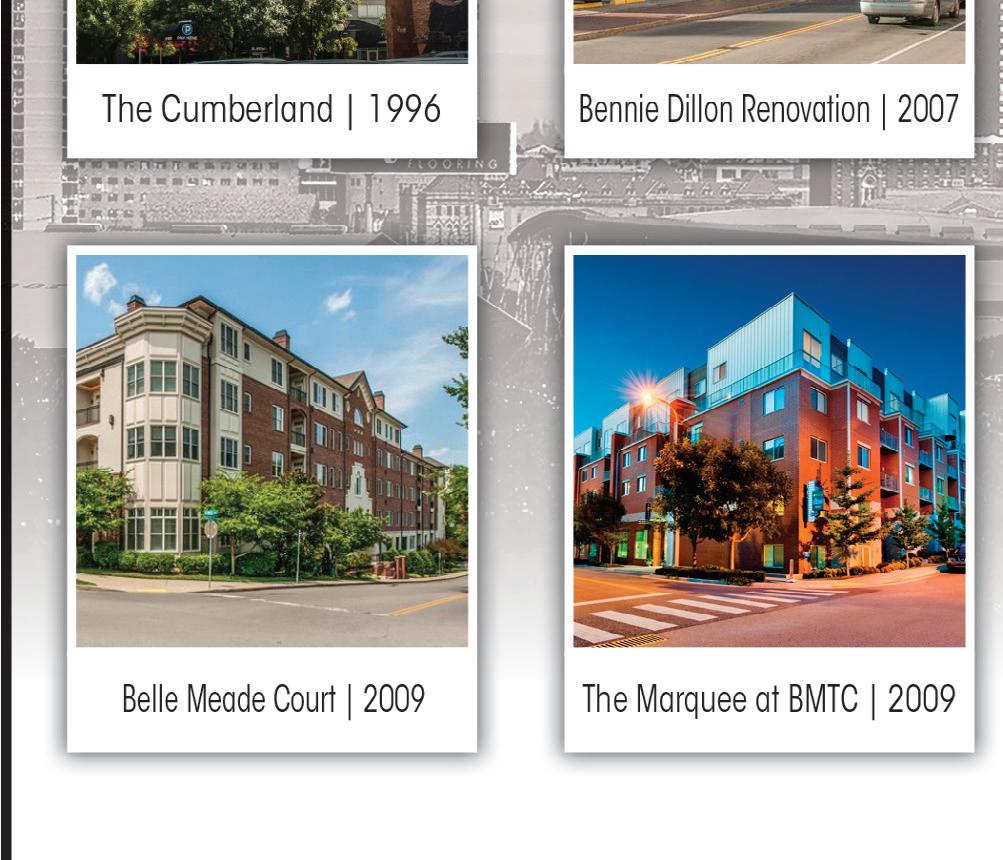












History Corner


















Local activists protested Metro budgets, white nationanlists, and the death of a child at the border last month.
Take a ride back in time as Joe Nolan reviews the classic motorcycle outlaw movie, Easy Rider ahead of the Spirit of '69 series at the Belcourt.
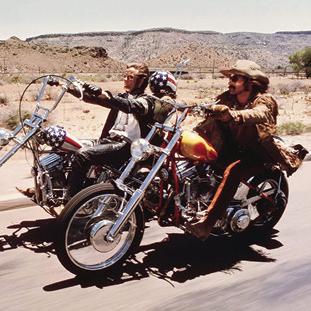

Our vendors write in this issue about scooters, faith, bosses, love, nashville, options, the free bus, and the impending CMA fest.
Contributor Board
Cathy Jennings, Chair Tom Wills, Bruce Doeg, Demetria Kalodimos, Ann Bourland
Amanda Haggard
• Linda Bailey • Tom Wills • Joe Nolan • Ridley Wills II
• Jennifer A. • Vicky B. • Cynthia P.
• David "Clinecasso" C. • Mr. Mysterio
• Alvine • June P. • Holly Gleason •
Germán Orizaola • Chris W. • John H. • Loum O. • Julie B. • Maurice B.





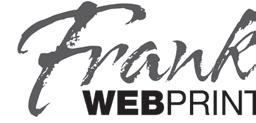
Cathy Jennings • Tom Wills • Joe First
• Andy Shapiro • Michael Reilly • Ann Bourland • Patti George • Linda Miller •
Deborah Narrigan • John Jennings • Barbara Womack • Colleen Kelly • Janet Kerwood • Logan Ebel • Christing Doeg • Laura Birdsall
• Nancy Kirkland • Mary Smith • Andrew Smith • Ellen Fletcher • Anna Katherine Hollingsworth • Michael Chavarria
Will Connelly, Tasha F. Lemley, Steven Samra, and Tom WIlls Contributor
Editorials and features in The Contributor are the perspectives of the authors. Submissions of news, opinion, fiction, art and poetry are welcomed. The Contributor reserves the right to edit any submissions. The Contributor cannot and will not endorse any political candidate.
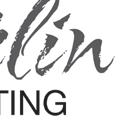
Submissions may be emailed to: editorial@thecontributor.org
Requests to volunteer, donate, or purchase subscriptions can be emailed to: info@thecontributor.org Please email advertising requests to: advertising@thecontributor.org







Mailng Address
The Contributor P.O. Box 332023, Nashville, TN 37203
Editor’s Office: 615.499.6826 Vendor Office: 615.829.6829

Proud Member of:





Printed at:
Follow The Contributor:
Copyright © 2018 The Contributor, Inc. All rights reserved.


 BY TOM WILLS, CO-FOUNDER
BY TOM WILLS, CO-FOUNDER
The paper you just paid for was bought by someone else first, otherwise it wouldn’t exist. That’s how The Contributor works. A vendor who experienced homelessness paid 50 cents for this paper and then sold it to you. By buying it and taking it with you, you’ve just encouraged that vendor to buy another. BOOM! That’s the solution. Now keep reading. This paper has something to say to you.

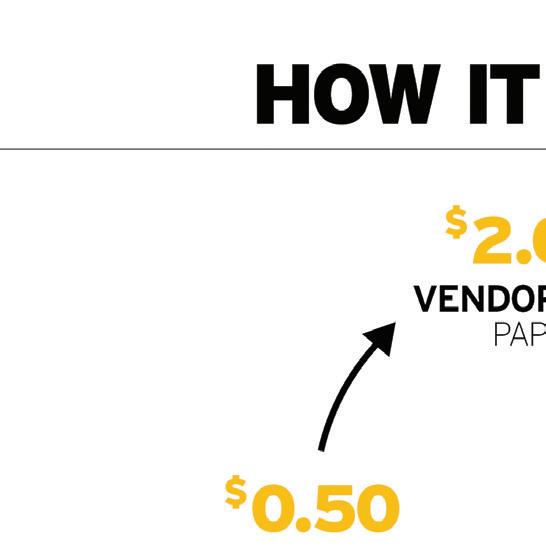
Street papers provide income for the homeless and initiate a conversation about homelessness and poverty. In 2007, The Contributor founders met at the Nashville Public Library downtown to form one. In a strike of lightning we named it The Contributor to infer that our vendors were “contributors to society,” while their customers could contribute to their work. But, thunder from lighting is always delayed …
It took three years, but Nashville embraced us like no other city in the world. The Contributor became the largest selling street paper per-capita on the globe. And today 50 percent of our six months or longer tenured vendors have found housing. BOOM! The thunder has struck.

The Contributor is a different kind of nonprofit social enterprise. We don’t serve meals or provide emergency shelter. We don’t hire people in poverty to create products or provide a service. Rather, we sell newspapers to homeless people who work for themselves. We train them to sell those papers to you, keep the money they earn, and buy more when they need to replace their stock.
Our biggest fans don’t always get this. Like lightning without the thunder, they see the humanity of the vendor but misunderstand the model. Case in point: In 2013 during a funding crunch, a representative of one of Nashville’s biggest foundations exclaimed, “I’m such a big fan that I never take the paper!” We responded, “Well, that’s why we are in a funding crunch.” BOOM! Thunder was heard. Taking the paper makes our model work — not taking it breaks it. And selling the paper twice doesn’t just fund the paper, it funds housing and change. BOOM! Our vendors report their sales to qualify for subsidized housing and even for standard housing deposits and mortgages. They don’t consider your buying the paper a “donation.” It is a sale. When they sell out, they buy more and build the paper trail of a profitable business. Until making these sales, many of our vendors had never experienced the satisfaction of seeing their investment pay off. And when it does, it liberates! They have become “contributors” to their own destiny. And Nashville has become a city of lightning and thunder. BOOM! Now that you are a SUPPORTER , become an ADVOCATE or a MULTIPLIER You are already a SUPPORTER because you know that taking the paper makes the model work. You bought the paper and you are reading it. Now your vendor is one copy closer to selling out, which is exciting! Now you can become an ADVOCATE when you introduce your friends to your favorite vendor, follow us and share our content on social media, contact us when you witness a vendor in distress or acting out of character, or explain why others should pick up a copy and always take the paper when they support a vendor. And, you can become a MULTIPLIER when you advocate for us AND directly donate to us or become an advertiser or sponsor of The Contributor. Our income stream is made of 50-cent- at-a-time purchases made from our vendors, matched by contributions, ad sales and sponsorships from multipliers like you. Because our vendors are business owners, your donations are seed-money investments in their businesses and multiply in their pockets. Every donated dollar multiplies four-to-seven times as profits in the pockets of our vendors. Thanks for contributing.
El periódico que usted acaba de pagar fue primeramente comprado por alguien mas, de otra manera no existiría. Así es como funciona The Contributor. Un vendedor que está sin hogar pagó 50 centavos por este periódico y después se lo vendió a usted. Al comprarlo y llevarlo con usted, usted animo a este vendedor a comprar otro. BOOM! Esa es la solución. Ahora continúe leyendo. Este periódico tiene algo que decirle. Los periódicos vendidos en la calle proveen ingresos para las personas sin hogar e inicia una conversación sobre lo que es la falta de vivienda y la pobreza. En el 2007, los fundadores de The Contributor se reunieron en una librería pública en Nashville para formar uno. Y como golpe de un rayo, le llamamos The Contributor para dar a entender que nuestros vendedores eran “contribuidores para la sociedad,” mientras que los consumidores podrían contribuir a su trabajo. Pero, el trueno siempre tarda más que el rayo. Nos llevó tres años, pero Nashville nos acogió como ninguna otra ciudad en el mundo. The Contributor se volvió uno de los periódicos de calle más vendido en el globo. Y hoy el 50 por ciento de nuestros seis meses o más de nuestros vendedores titulares han encontrado casa. BOOM! Ha llegado el trueno.
JENNINGSThe Contributor es una empresa social sin fines de lucro muy diferente. Nosotros no servimos comida or proveemos alojo de emergencia. No contratamos gente en pobreza para crear productos or proveer un servicio. En vez, nosotros vendemos periódicos a las personas sin hogar para que ellos trabajen por ellos mismos. Nosotros los entrenamos como vendedores, ellos se quedan el dinero que se ganan, y ellos pueden comprar más cuando necesiten reabastecer su inventario.
Nuestros mas grandes aficionados no entienden esto. Como un rayo sin trueno, ellos ven la humanidad de el vendedor pero no comprenden el modelo. Un ejemplo: En el 2013 durante un evento de recaudación de fondos, uno de los representantes de una de las fundaciones más grandes de Nashville, exclamó: “Soy un gran aficionado, y es por eso que nunca me llevo el periódico.” Al cual nosotros respondimos: “Y es por esa razón por la cual estamos recaudando fondos.” BOOM! Y se escuchó el trueno! El pagar por el periódico y llevárselo hace que nuestro sistema funcione, el no llevarse el periódico rompe nuestro sistema. Y el vender el papel dos veces no da fondos para el periódico, pero da fondos para casas y causa cambio. BOOM! Nuestros vendedores reportan sus ventas para calificar para alojamiento subvencionado y hasta para una casa regular, depósitos e hipotecas. Ellos no consideran el que usted compre el periódico como una “contribución” pero más lo consideran como una venta.
Cuando se les acaba, ellos compran mas y asi logran establecer un negocio rentable. Hasta que lograron hacer estas ventas, muchos de nuestros vendedores nunca habían experimentado el placer de ver una inversión generar ganancias. Y cuando logran hacer esto, da un sentido de Liberación! Ellos se han vuelto contribuidores de su propio destino, y Nashville la ciudad de el trueno y el rayo. BOOM!
Ahora que te has vuelto nuestro SEGUIDOR, vuelve te en un ABOGADO o un MULTIPLICADOR. Ya eres nuestro SEGUIDOR, porque sabes que al llevarte este periódico sabes que esto hace que nuestro modelo funcione. Compraste el papel y lo estas leyendo. Ahora nuestro vendedor está a una copia más cerca de venderlos todos. Que emoción!
Ahora que te has vuelto nuestro ABOGADO cuando presentes a tus amigos a tu vendedor favorito, siguenos y comparte nuestro contenido en social media, contactanos cuando seas testigo de un vendedor actuando de manera extraña o fuera de carácter. O explicale a tus amigos porque ellos deben de llevarse el periódico cuando ayuden a un vendedor.
Te puedes volver un MULTIPLICADOR cuando abogues por nosotros, Y directamente dones a nosotros o te vuelvas un anunciador o patrocinador de The Contributor. Nuestra fuente de ingresos consiste en ventas de 50 centavos hechas por nuestros vendedores, igualadas por contribuciones, venta de anuncios, y patrocinios de multiplicadores como usted. Porque nuestros vendedores son dueños de negocios, las donaciones que den son dinero que es invertido y multiplicado en sus bolsas. Cada dólar donado se multiplica de cuatro a siete veces en la bolsa de nuestros vendedores. Gracias por Contribuir.

Reactor number four of the Chernobyl Nuclear Power Plant suffered an explosion during a technical test on April 26, 1986. As a result of the accident, in the then Soviet Union, more than 400 times more radiation was emitted than that released by the atomic bomb dropped on Hiroshima (Japan) in 1945. It remains the largest nuclear accident in history.
Decontamination work began immediately after the accident. An exclusion zone was created around the plant, and more than 350,000 people were evacuated from the area. They never returned. And severe restrictions on permanent human settlement are still in place today.
The accident had a major impact on the human population. Although there are not clear figures, the physical loss of human lives and physiological consequences were huge. Estimates of the number of human fatalities vary wildly.
The initial impact on the environment was also important. One of the areas more heavily affected by the radiation was the pine forest near the plant, known since then as the “Red Forest.” This area received the highest doses of radiation, the pine trees died instantly and all the leaves turned red. Few animals survived the highest radiation levels.
Therefore, after the accident it was assumed that the area would become a desert for life. Considering the long time that some radioactive compounds take to decompose and disappear from the environment, the forecast was that the area would remain devoid of wildlife for centuries.
But today, 33 years after the accident, the Chernobyl exclusion zone, which covers an area now in Ukraine and Belarus, is inhabited by brown bears, bisons, wolves, lynxes, Przewalski horses, and more than 200 bird species, among other animals.
In March 2019, most of the main research groups working with Chernobyl wildlife met in Portsmouth, England. About 30 researchers from the United Kingdom, Ireland, France, Belgium, Norway, Spain and Ukraine presented the latest results of our work. These studies included work on big mammals, nesting birds, amphibians, fish, bumblebees, earthworms, bacteria and leaf litter decomposition.
These studies showed that at present the area hosts great biodiversity. In addition, they confirmed the general lack of big negative effects of current radiation levels on the animal and plant populations living in Chernobyl. All the studied groups maintain stable and viable populations inside the exclusion zone.
A clear example of the diversity of wildlife in the area is given by the TREE project (TRansfer-Exposure-Effects, led by Nick Beresford of the UK’s Centre for Ecology and Hydrology). As part of this project, motion detection cameras were installed for several years in different areas of the exclusion zone. The photos recorded by these cameras reveal the presence of abundant fauna at all levels of radiation. These cameras recorded the first observation of brown bears and European bison inside the Ukrainian side of the zone, as well as the increase in
the number of wolves and Przewalski horses.
Our own work with the amphibians of Chernobyl has also detected abundant populations across the exclusion zone, even on the more contaminated areas. Furthermore, we have also found signs that could represent adaptive responses to life with radiation. For instance, frogs within the exclusion zone are darker than frogs living outside it, which is a possible defence against radiation.
Studies have also detected some negative effects of radiation at an individual level. For example, some insects seem to have a shorter lifespan and are more affected by parasites in areas of high radiation. Some birds also have higher levels of albinism, as well as physiological and genetic alterations when living in highly contaminated localities. But these effects don’t seem to affect the maintenance of wildlife population in the area.
The general absence of negative effects of radiation on Chernobyl wildlife can be a consequence of several factors:
First, wildlife could be much more resistant to radiation than previously thought. Another alternative possibility is that some organisms could be starting to show adaptive responses that would allow them to cope with radiation and live inside the exclusion zone without harm. In addition, the absence of humans inside the exclusion zone could be favouring many species — big mammals in particular.
That final option would suggest that the pressures generated by human activities would be more negative for wildlife in the medium-term
than a nuclear accident – a quite revealing vision of the human impact on the natural environment.
In 2016, the Ukrainian part of the exclusion zone was declared a radiological and environmental biosphere reserve by the national government.
Over the years, Chernobyl has also become an excellent natural laboratory for the study of evolutionary processes in extreme environments, something that could prove valuable given the rapid environmental changes experienced worldwide.

At present, several projects are trying to resume human activities in the area. Tourism has flourished in Chernobyl, with more than 70,000 visitors in 2018. There also plans for developing solar power plants in the area, and for expanding forestry work. Last year, there was even an art installation and techno party inside the abandoned city of Prypiat.
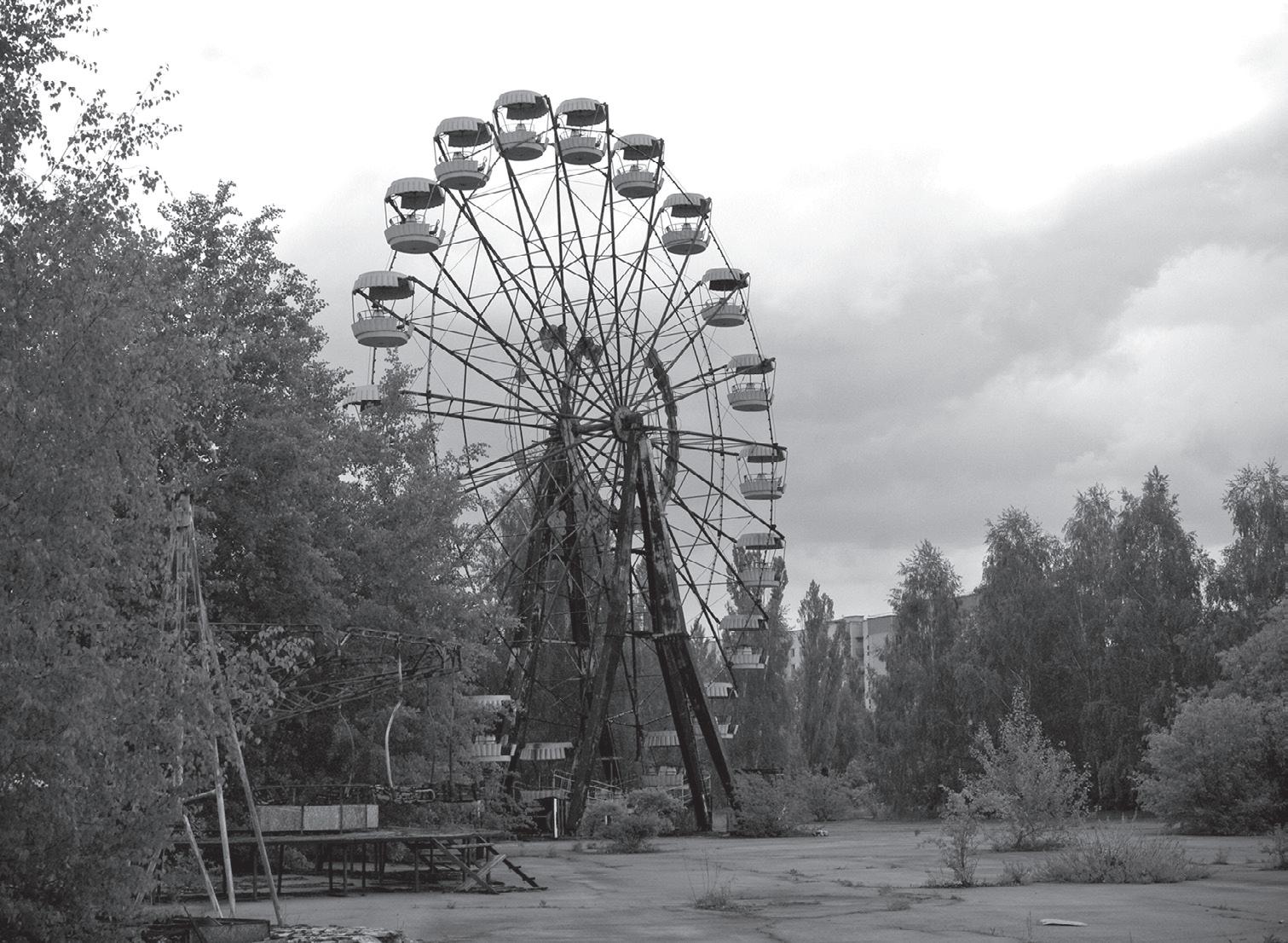
Over the past 33 years, Chernobyl has gone from the being considered a potential desert for life to being an area of high interest for biodiversity conservation.
It may sound strange, but now we need to work to maintain the integrity of the exclusion zone as a nature reserve if we want to guarantee that in the future Chernobyl will remain a refuge for wildlife.
Germán Orizaola is a researcher at the University of Oviedo.
Courtesy of The Conversation / INSP.ngo
The first person to publicly advocate holding a Centennial Exposition in Tennessee was a Nashville attorney, Douglas Anderson. He did so in a letter to the Chattanooga Times dated August 10, 1892. A presidential election in 1892 and a recession were two reasons that nothing happened as a result of his suggestion. A year later, Captain W. C. Smith, also of Nashville, wrote the board of directors of the Commercial Club in Nashville promoting the idea of celebrating the first centennial of Tennessee’s admission into the Union by holding a great exposition in Nashville in 1896.
This time there was a favorable response, following the lead of the Nashville daily press. Smith was named chairman of a committee of 25 to pursue the matter. The committee recommended that a grand exposition showcasing the resources, products, manufactures, arts, industry and history of the state be held in Nashville from September 1, 1896 until November 1, 1896, and that a board of directors, 60 in number, be named to manage the effort. This materialized and, on July 24, 1894, an executive committee was elected. Major A. W. Wills was named the Director General in this formative period. The committee asked the Tennessee State Legislature to appropriate $350,000 and went to Washington, D.C. to lobby for federal aid.
On the Fourth of July, 1895, only $62,635 had been subscribed. Of this, $50,000 came from Davidson County. The executive committee met on May 18, 1895 to, “determine whether we should continue the effort to hold the exposition, or abandon it.” Although the situation was desperate, the committee members unanimously voted to go on, although they had no idea where the money would come from. The committee resigned in July, feeling that a reorganization at that time would be beneficial. A new committee of nine was appointed to consider the advisability of reorganizing the Centennial Exposition Company. The members voted to do so and, before the meeting adjourned, $12,649 had been raised. By July 20, a total of $165,000 had been subscribed.
On July 23, 1895, the directors met at Watkins Hall, where they elected Major John Thomas president. Before the meeting adjourned, Major Thomas appointed an executive committee. A week later, Major E. C. Lewis was elected Director General. In September, he outlined his plans. He proposed that the main exposition building would be an exact reproduction of the Parthenon and that other buildings be grouped around it.
In October 1895, the executive committee instructed the Director General to advertise at once for plans and specifications from architects for the Parthenon, Transportation Building and auditorium. These plans were approved on November 29, 1895. This would not have happened had not the Nashville City Council voted unanimously to submit to the voters of the city a proposal that the City of Nashville subscribe $100,000 to the centennial. The proposal was approved. Soon, employees of the NC&StL Railroad and the Gerst Brewing Company subscribed $7,500 and $2,635. Employees of other Nashville companies followed suit. Despite the gratifying support, the management of the Exposition company realized that having an opening in 1896 was impossible. They voted to postpone the opening to May 1, 1897.
Director general Lewis reported to the executive committee on June 8, 1896 that disbursements amounted to $204,354.83 and that the sum of $106,926.86 had to be raised to pay for the work then in hand and under contract. Nashville’s two major railroads, the L&N and the NC&StL came through wirth gifts of $25,000 each. The NC&StL also built a terminal at the north entrance to the exposition at a cost of $15,000 and installed a magnificent exhibit at a cost of $10,000. Work began on a Negro Building and a Machinery Hall.
During the long construction period, the pressure on director general Lewis intensified. To lessen his burden, the executive committee on April 15, 1897 named Dr. William L. Dudley, of Vanderbilt, director of affairs. He proved to be a strong right arm for Lewis.
Three issues were paramount in the minds of the Centennial
executive committee-the idea of incorporating Centennial City in order to give it police power and remove its control from political influence, a financial appropriation form the national government and an appropriation from the state legislature. All three were accomplished although the appropriations were not as large as had been hoped. On December 19, 1896, the federal government appropriated $130,000 for the construction of a building and for a national exhibit. The bill was passed contingent on the Centennial raising $500,000 in bona fide subscriptions from individuals, cities, counties and state. By December 30, 1896, the $27,000 needed was raised thanks largely to the people of Nashville. Next came the struggle with the state legislature for an appropriation. While $350,000 had been discussed, a more cautious ask of $100,000 was decided upon. After a bitter struggle, the legislature appropriated $50,000 of which $30,000 was designated for the purchase of the Agriculture Building. The third hurdle was the incorporation of Centennial City, which would allow the exposition to sell intoxicating liquors. Opposition quickly developed, arguing that the petition was the work of brewers and distillers. After a long tedious fight, the legislature passed a bill incorporating Centennial City.
On April 30, 1897, the last day of the pre-exposition period, the financial status was gratifying. Receipts amounted to $555,609.03 and disbursements amounted to $555, 183.28. A remarkable showing for the receipts did not include $1 of government appropriations or of the subscriptions of any county or city other than Davidson and Nashville. The money received was given, in main, by the people of Nashville.
On opening day, the streets of Nashville were thronged with a crowd estimated at 125,000 despite a steady downpour of rain. In the procession to the Centennial grounds on West End were national and state troops, ex-Confederate veterans waving the stars and stripes, civic society members, a bicycle brigade, members of fraternal and benevolent orders, ladies in beautifully decorated carriages, and private citizens in carriages, on horseback and on foot. The procession, constituting 10,000 people, stretched eight miles long. At the head of the procession rode Gen. Charles Thurman, Chief Marshall; Capt. H.C. Ward, Chief of Staff; and Col. Thomas Claiborne, Adjutant General.
As the procession approached the exposition grounds, 100 guns were fired, each representing one year of the state’s history. President John W. Thomas led the flag raising and Jacob McGavock Dickinson gave the inaugural address.
Later, the Honorable A.A. Taylor, of East Tennessee, gave an address “Early Days of Tennessee.” His speech was followed sometime later by an address by the Hon. E. W. Carmack, of Memphis, on the “Future of the State.”
The most electrifying event of the day came in the auditorium when Exposition president, John Thomas, also president of the L&N, declared the exposition officially open. At that moment, the President of the United States, pushed a button in the White Hose that sent an electrical impulse through Richmond and Asheville, N.C. to Nashville that put in motion the giant wheels in Machinery Hall. There was a huge applause.
Immediately after the conclusion of the exercises in the auditorium, the dedication of the electrical fountain, erected by the women’s department, took place. Governor Robert L. Taylor praised the woman’s board before the beautiful Mrs. Van Leer Kirkman, president of the woman’s board, pressed a button, which started the water flowing from the fountain. The opening day ended with a grand display of fireworks.
One of the Centennial ground’s most distinctive structures was the Rialto Bridge that spanned Watauga Lake. When the West Side Race track had been there, there was only a slight depression where engineers built Lake Watauga. They used the fill from the lake to form a base for the Parthenon so that it would be somewhat elevated. The little clump of trees and
shrubbery that formerly adorned the infield of the race track was left and the surrounding earth was moulded to form Willow Island. Later the trees were removed and over the lake were built two bridges, the largest of which was a reproduction of the Rialto. Over the surface of the lake Italian men rowed five picturesque gondolas brought from Venice. Also, the lake became the home for black and white swans, ducks and geese.
Facing the lake were the Negro, Transportation, Agriculture, and U. S. Government Transportation buildings, all of which were temporary. The Negro Department was one of the first organized. Its department head was Mr. J. C. Napier, a lawyer and a man esteemed by his community. He resigned on account of ill health and was replaced by Richard Hill, a black school teacher. The idea of having a Negro Building was to illustrate how far the race had come since emancipation 30 years earlier. Two black men were honored by the Negro Department — Uncle Bob Green of Belle Meade and Uncle Alfred of The Hermitage.
Every effort had been made to get President William A. McKinley to attend opening day. Although this did not work out, he and Mrs. McKinley were present on July 12 for Ohio Day. They stayed at the Maxwell House and rode in a parade of 18 carriages from there to the Centennial grounds. His honor guard were Confederate veterans. That night McKinley's name and profile were illuminated by fireworks in a grand display.
Three of the most important days were President John Thomas Day, Nashville Day and Closing Day. It was seriously doubted that any other city in the world ever did so much with so little and with so many difficulties as did the people of Nashville in providing the major support for the exposition.
Of course, the most dominating building at the Exposition was the Parthenon. The idea of building, as the exposition centerpiece, an exact replica of the ancient Parthenon in Athens, Greece, was that of Major E. C. Lewis, the centennial’s director general. Inside the Parthenon were oil paintings and sculptures. The paintings were described as the most valuable works of art ever exhibited in the South. Captain William C. Smith was the architect for the Parthenon, which reminded visitors that Nashville was the Athens of the South.
One of the most unusual buildings erected at the Exposition was the Memphis Building, situated between the Parthenon and Watauga Lake. Memphians had reason to be proud of this building shaped in the form of a pyramid as Shelby Countians and Memphians gave more than any other city and county to the Exposition except Nashville and Davidson County. The Neely Zouaves exhibited their drilling skill outside the building on Memphis Day.
I’ve always been impressed that the cabins in which Abraham Lincoln and Jefferson Davis were born, both in Kentucky, were both brought to Nashville on railroad flat cars and displayed at the Centennial grounds.
The Centennial Exposition was, above all, a celebration of the technological progress brought by the machine age. It was one of the largest and grandest of a series of industrial expositions that became hallmarks of the new South era. Modeled after the Chicago Columbian Exposition of 1893, it also included a midway with exciting rides and exotic shows for the entertainment of families attending. Between May 1, 1897 and November 30, 1897, when it closed the exposition drew approximately 1.8 million visitors, the largest of any Southern exposition. My Wills family visited many times as did the Weaver family of which my wife is a member. Photographs indicated that when they visited, they wore their Sunday best clothes. There were remarkably few arrests made during the celebration, which brought favorable international attention to Nashville. A few years after the Exposition closed, the grounds were converted into Centennial Park, the centerpiece of Nashville’s new park system. A rebuilt Parthenon is the crowning jewel of the park today.
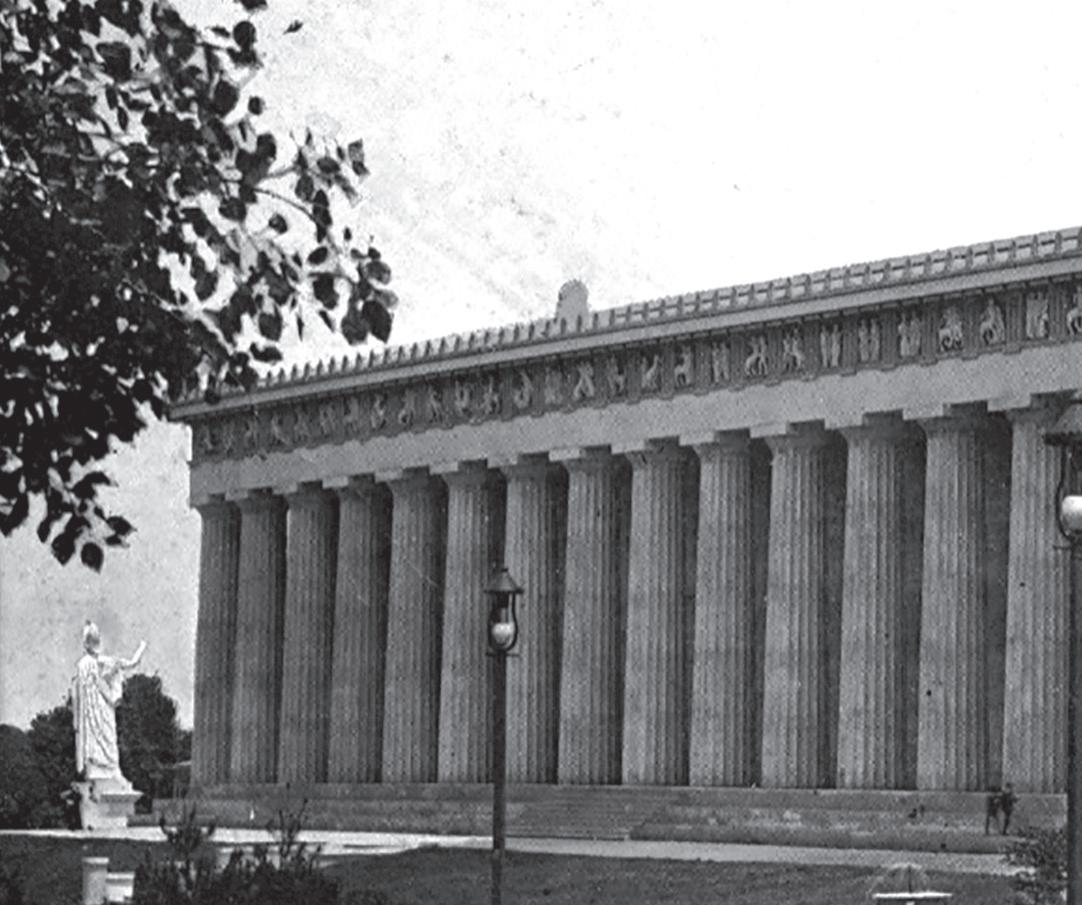
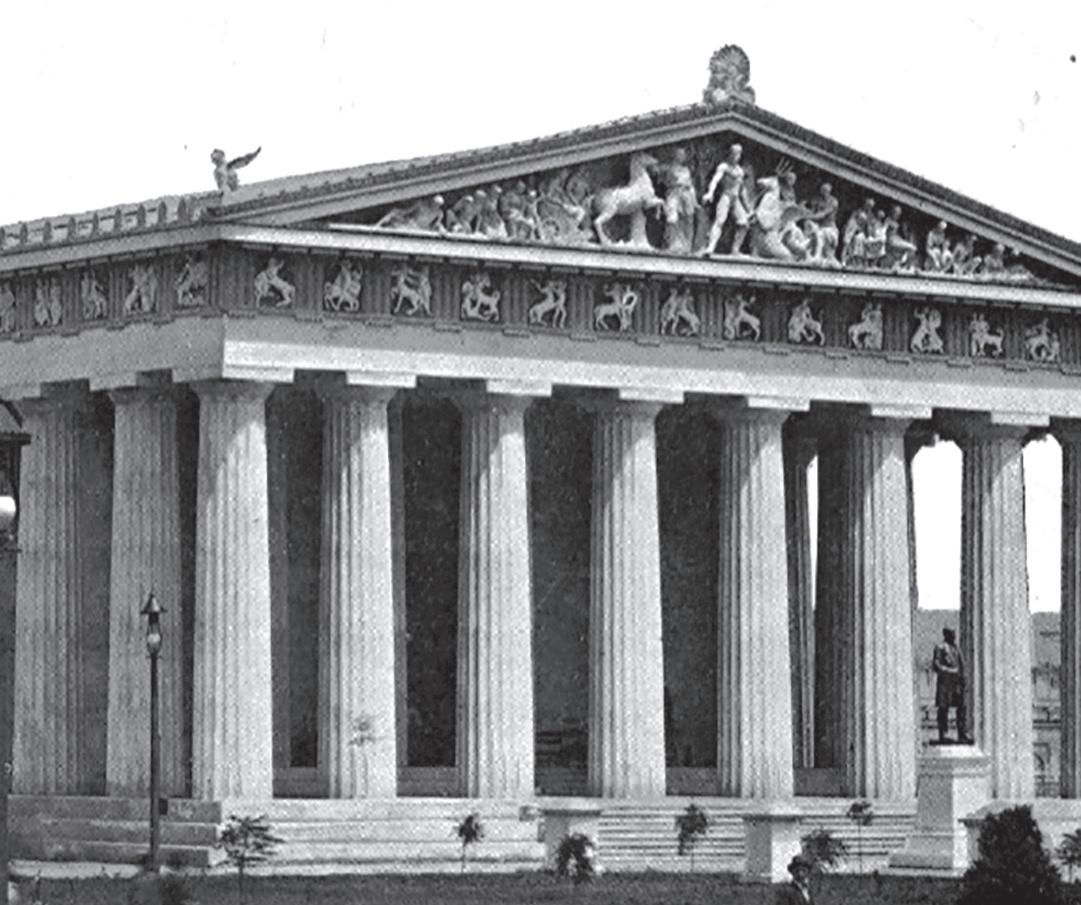

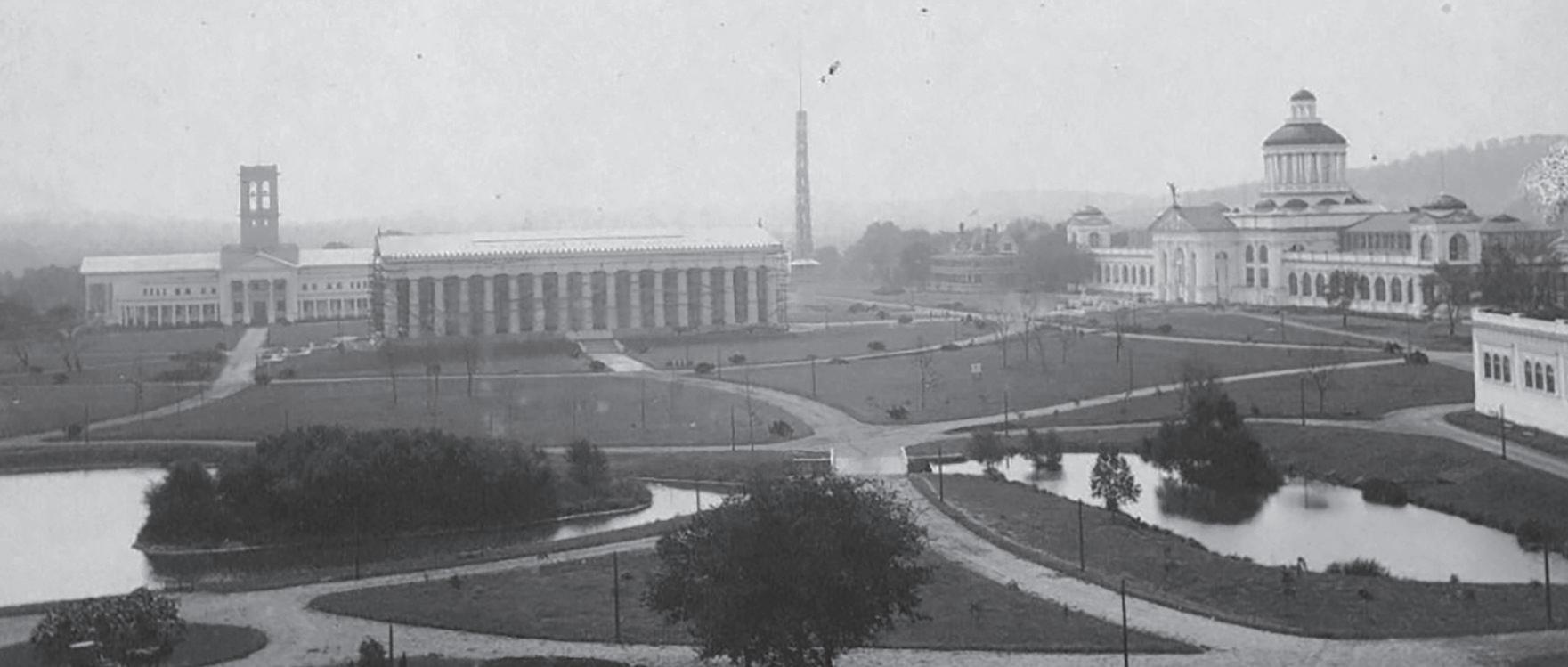
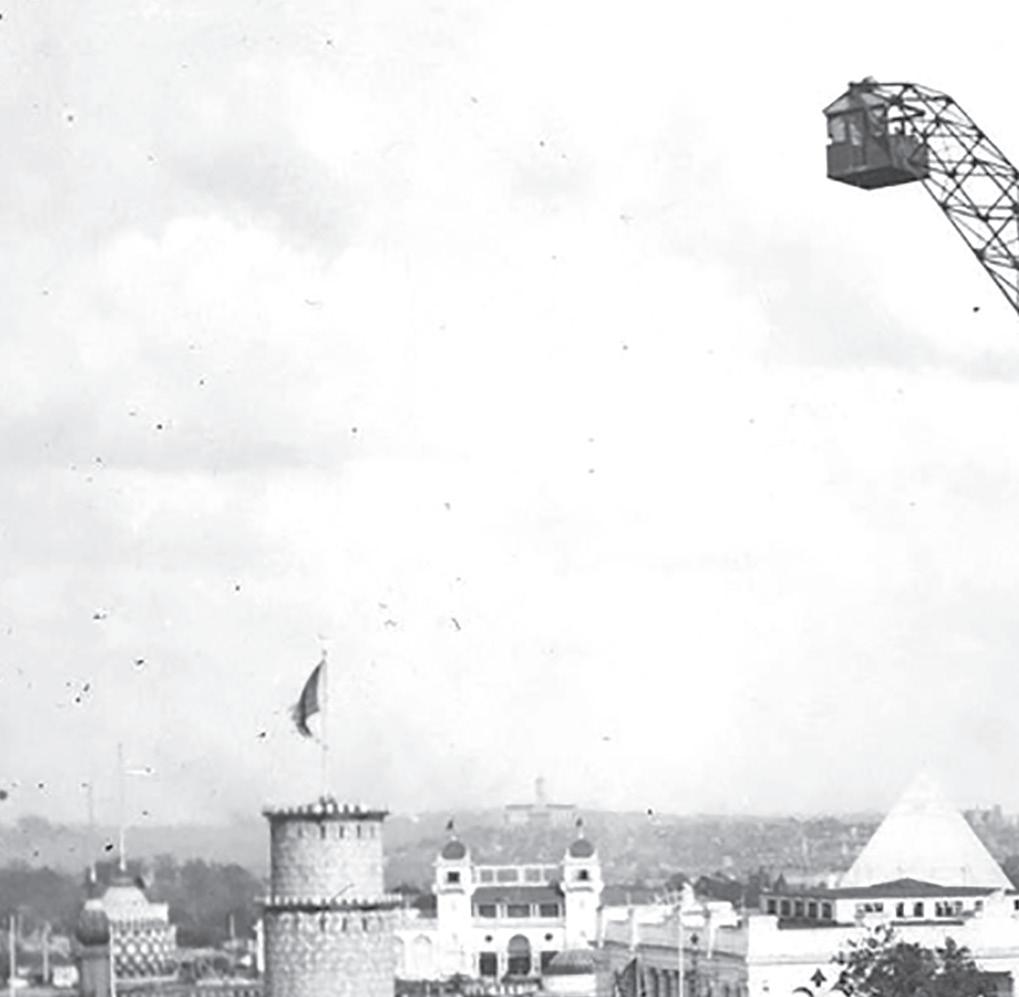
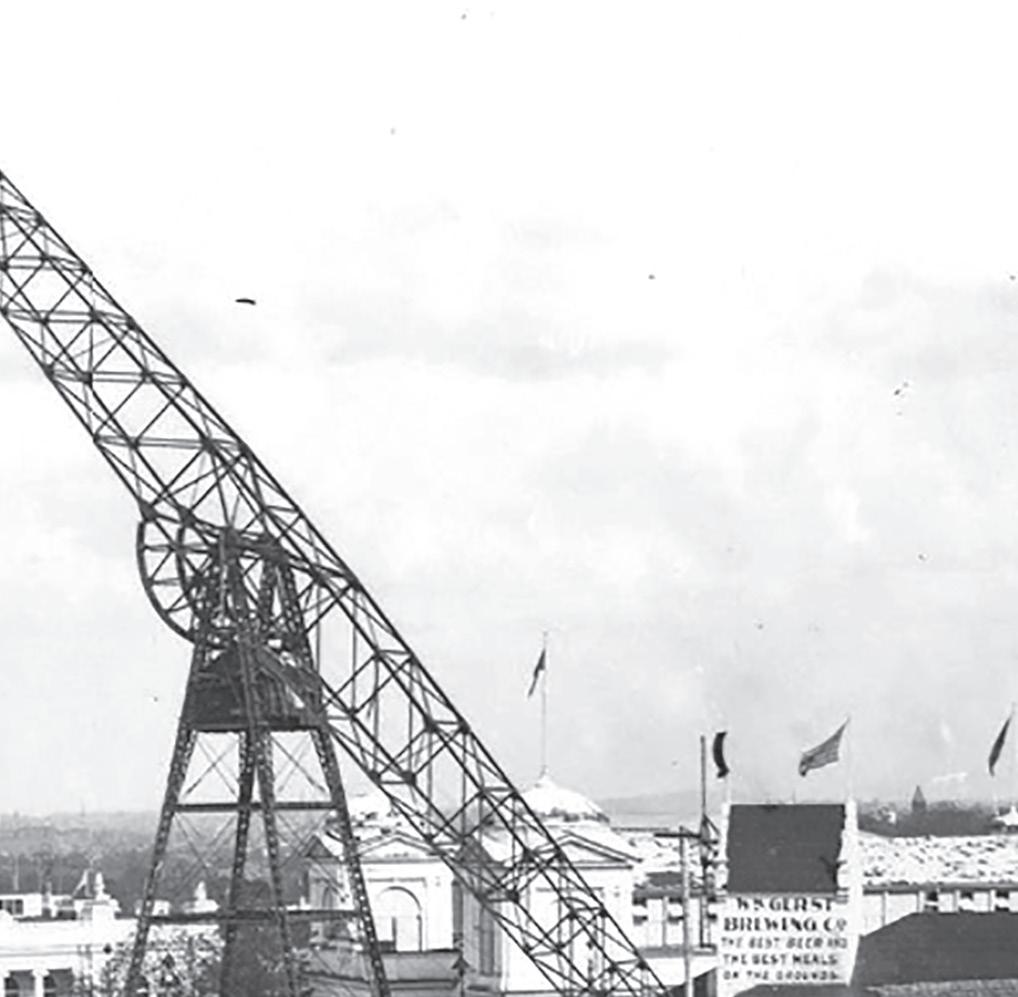

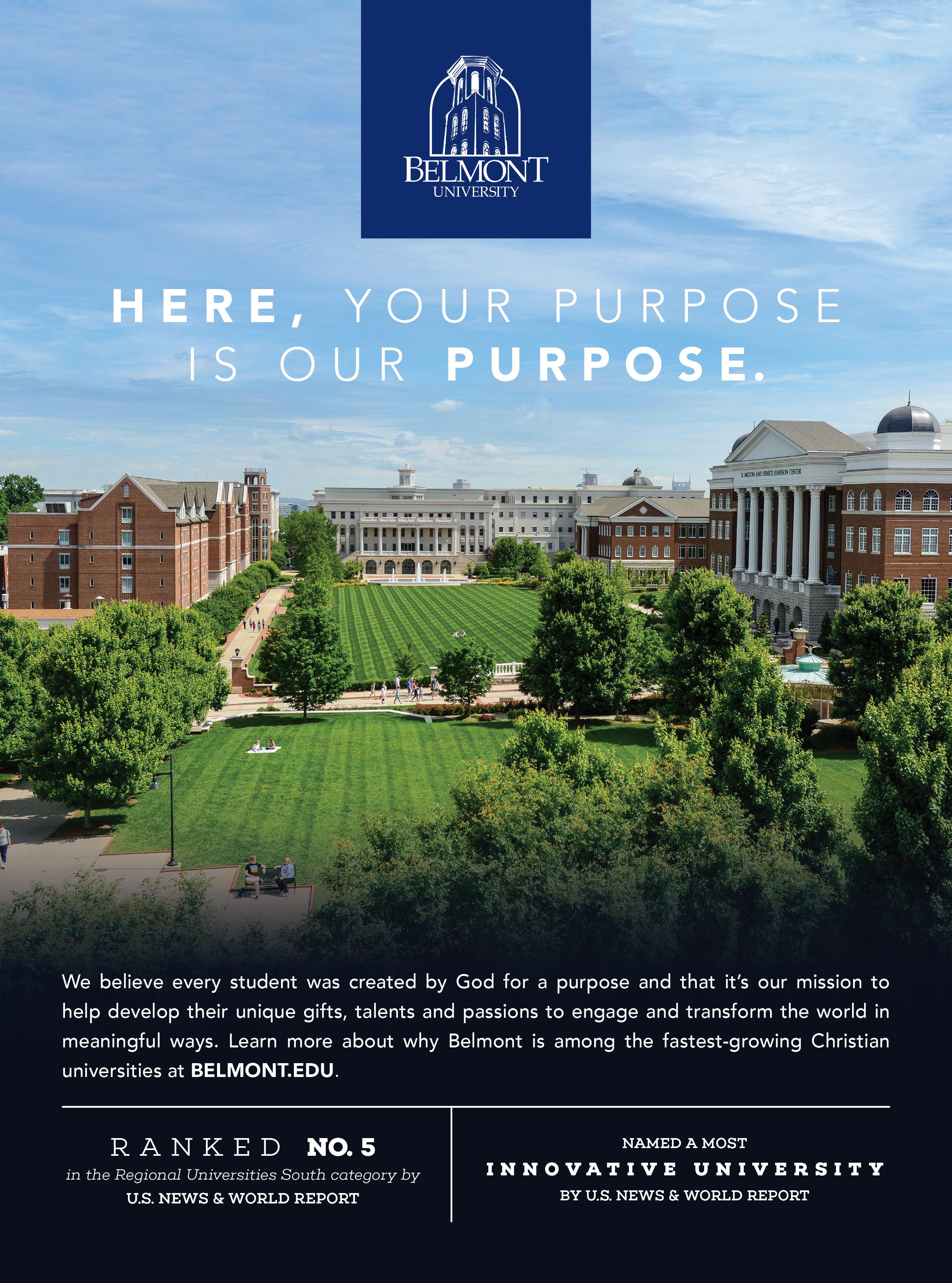
(Top Left): Lolita Kincaid, SEIU member speaks at a press conference and rally at Metro Courthouse before Council meeting on May 21. Members of SEIU, MNEA, and other supporters are asking for a "Moral Budget" that fully funds schools and Metro services.


(Top Right): Members of the Poor People's Campaign, varioius racial justice groups and anti-fascists groups protested the "American Renaissance" convention in Montgomery Bell State Park on May 18. The American Renaissance is recognized as a White Nationalist organization.

(Left): Nashville supporters of immigrant rights rally at the Federal Building in response to an announcement of a sixth child's death in custody on the border.

Keith Urban had a plan.

“I told Nicole before they even read the nominees, ‘If we go to the left, straight up the stairs and over the stage, we can get right to the car,’” says the man who headlines CMA Music Fest’s Sunday night Nissan Stadium show when asked what he was thinking in the moments before being named the 2018 Country Music Association Entertainer of the Year. “We’d already planned our escape....”
And then Kix Brooks, Ronnie Dunn and Reba McEntire opened the envelope, read the winner — and a very stunned Keith Urban threw his hands over his face. Laughing now, the perennial favorite songwriter-guitarist-vocalist offers that his next thought, “was probably just ‘Holy shit!’ Having been nominated many times, year after year after year, I’ve come to be grateful for the nomination. After nine years you start to think, ‘OK, the award is the nomination,’ and be at peace with that. So many great people are vying for the category, just being nominated is pretty awesome, really.”
The humility is genuine. The Australian superstar who’s constantly pressing the boundaries of what his music can embody in a world of so much status quo is a big believer in the larger community. Not just among his artistic peers, but also his fellow man.
When he got to Las Vegas for the Academy of Country Music Awards, again nominated for Entertainer of the Year, he eschewed a flashy performance, a big hit or a lot of production. Instead he stood alone on a dark stage as a few piano notes fell to deliver a hushed take on Irish singer-songwriter Foy Vance’s incredibly adult lullaby “Burden.”
An obscure song that serves as an offer of support and an invitation of surrender amidst life’s tumult, the stunning moment. Stood out in a night of collaborations, fire, dancers. Instead of playing guitar, Urban stood unadorned, almost whispering, “Let me carry your burden/ If something's not right I will let you know/ Like the paint that's drying on a heart that's poor/ Let me carry your burden...”
The antithesis of Las Vegas, awards shows, bold-faced star power, the song Urban had spent a day riding around London on a bicycle listening to over and over was the statement he felt compelled to make. As “Burden” built and swelled, instruments joining in, the stage remained dark, the superstar almost left in the shadows instead of the expected bright, hot spotlights.
“I’ve been both people in that song,” confesses the soft-spoken artist. “The comforter and the one who needs comfort, we’ve all been there. You hear those words, and we’ve all felt them...”
Vance, who’s opened tours for Ed Sheeran, had no notion it was happening. Indeed, he didn’t know that Urban had fallen for his song. Nor that he had — upon returning from Europe — booked notes Americana producer Dave Cobb to record the song. “Burden’s creator had no idea until the song hit the streaming services; he’d missed the performance. Thankfully, he felt his truth in Urban’s recording.
“He got my number from someone, and I got a text, saying ‘Well, that was lovely,’” Urban recalls. The men did not meet until May when they went into the studio together, looking to see if perhaps there were intersection points between their humanity and musicality. Joking, Urban notes, “We spent five hours getting to know each other, and then wrote the song in 20 minutes.”
Never mind that less than three hours after his haunting performance, he won an equally unexpected ACM Entertainer of the Year Award.
“What’s the odds of winning the lottery twice?” he concedes. “Historically, they are very different organizations, memberships — and very different kind of outcomes.”
Even in the winning, Urban remains hardwired for music and people more than acclaim.
“What some readers don’t know is every nominee has a camera on them, all stuck in front of you, so there’s no idea who the winner is. Whereas in the old days, there would be a camera would be hovering in the general vicinity of the winner... and you’d have a bit of a clue, an idea you could be the winner. Now, it’s not like that — and it’s such a surreal moment.”
He says of winning awards in general, “There’s this gratitude for the support (from the community) for the work that you do.” But you get the sense having the platform to bring a song no one had heard, one he felt spoke a message people needed was
as potent a moment that night as taking home the top prize.
“I think [empathy, awareness] just goes with being an artist. The creativity comes from somewhere. For me, it’s how I feel about creativity. It’s a very strong spiritualism.”
Urban pauses. It’s a sunny day in Tennessee. “We Were,” a brisk midtempo radio friendly single, is rising up the charts. He has a beautiful wife in Oscar-winning actress Nicole Kidman, a lovely family, a fairy tale life. Perhaps he is weighing whether to keep going, or maybe he’s just taking in the beauty of it all.
“My level of presence and serenity is directly proportional to the gratitude that I have. Actual gratitude, being present and thankful. It comes out in what and how I do... It doesn’t mean that I don’t get pissed off, and angry, and jealous, because I do! But it means that even in those things, if I can come back to gratitude, I can find my way.”
Joking the year’s accolades are “all relative” and “it feels like an upswing of sorts,” the man who plays guitar like musical liquid silver is grateful for all that has happened. And at the same time, those awards — awards he is grateful for — are the last thing he’s thinking about on his journey.
Again, laughing about the way things have played out for a man who’s beaten demons, pounded the road, sought true expression, the goals were much, much simpler. “When I first started playing the guitar at six years of age, I wanted to keep doing that for as long as I possibly could. When I started writing songs, it was the same thing: to be able to continue making music.
“Coming up in country music festivals and playing all over Australia at 9, those were my roots. Then I got completely indoctrinated by Top 40 radio as a young teen, all the music that was being played from Motown to pop. My Malcolm Gladwell 10,000 hours happened as a very punk rockish thing, playing these sweaty, tiny bars all over Australia.
“Rough, sweaty, beer-soaked clubs for five hours, four sets a night from 9:15 to 2. Sometimes it was solo with a PA on stick, with a duo or a little group. But it was playing music, so much music, not knowing what it meant, but being everything in your soul.”
Everything in your soul has always been Urban’s compass. A kid consumed by music that lived to play his guitar, he arrived in America and played those same scruffy bars. With the Ranch, he signed to Capitol Nashville and failed to ignite. Everyone spoke of how ragingly talented the young Aussie was, but somehow it didn’t translate.
Being an outlier, he understood that one can fly at something or one can fly towards their own heart. Conventional wisdom yields any number of Xerox cowboys rising up the charts, having hits, but perhaps being hard to differentiate from each other. Not that Urban was worrying about the marketing thrust, or being one more of those.
“It’s all a result of all it,” he explains. “I was trying to make music that I felt, for me, somebody who loves a lot of different things. There are all kinds of fusions and bringing things together, more than any one thing, I want to see where it can go. Maybe the question is: how liberated? Because that’s all I ever wanted: to be able to create liberally.”
He sees that same wide-open spirit in Lil NasX’s massive “Old Town Road,” which sparked controversy when topping – then being removed — from Billboard ’s Hot Country Charts after its streaming tsunami drowned Music Row. As debates about racism, marketing, categorization raged in the national media, Urban — fresh from his Entertainer of the Year sweep — quietly posted a soulful, banjo/vocal performance on his social media platforms.
“It’s a great song and a great performance,” he says of Lil Nas X’s creation. “It spoke to me the same way that I felt when I rode around, trying to make it. The cowboy imagery for being a loner out there, a young kid sleeping on coaches and doing anything he can to follow his dream is a perfect metaphor for what that struggle is.
“It was so bad ass, the way he did it, and simple. In the studio, I had my banjo, and I thought, ‘Well, let’s see how this feels...’ And it felt pretty good. So I did it.”
Not to crusade, not to jam an agenda, just to celebrate music. The delight is palpable when he says, “It speaks to me the same way ‘Happier’ did. ‘Old Town Road’ fuses so many things into this gumbo that is so original you can’t label it. Isn’t that what we’re all striving for?”
Still in a world of shut-up-and-sing, one might be reticent
about singing’n’posting. After all, Urban is a beloved sex symbol, a musician’s musician, an ambassador for the genre. There’s no win for him in championing an artist he’d never met. He knows what’s being hinted at, and he admits he’s never going to be a preacher.
“Yeah, some people said, ‘Maybe don’t do that,’” he recalls. “I heard, ‘It’s such a controversial thing to do right now. Country radio might be upset...’
“But right now, there’s far too much emphasis on what something isn’t — and there is so much being missed. It boggles the mind. And I wanted to maybe clear some air around the song itself. No judgement, just music.”
To that end, Urban leans into music as a healer, a salvation, a comfort. Also, a source of unrepentant joy. After he’d cut “We Were,” he found out his friend Eric Church was the co-writer. Texts were exchanged: Church was genuinely surprised the guitarist loved country’s rebel rocker’s song enough to make it his next single.
Playing it solo at the Ryman during Country Radio Seminar, Urban shone. The words of innocence melting into the stiff industry crowd brought a reality to the universal trope of coming of age that matched tenderness with knowing.
“It was an almost visceral feeling rather than singling out words or lines,” he says of its initial impact, “and I didn’t just hear it, I felt it. After that certain lines just rose up... You know, ‘By the time we knew time was runnin' out/ We done run out of time/ And we were downtown Saturday night/ Last-call cover band/ Til the last song played/ Never thought we'd fade/ Like the stamp on the back of her hand...’ was the perfect expression of a young relationship.
“So intense, so bright, so forever in that moment. There is an innocence in that, an exploratory rite of passage that everyone passes through. I grew up in a small town in Australia. We had a water town, a field, those backroads, all those images halfway around the world, I flew through them, too. It’s the truth of how we grow up and who we become.
“Maybe it’s the vulnerability (of how you feel) more than the innocence.
“It’s become a real badge of honor to have a thick skin. But when people claim that, I feel so terrible for them. To be so hardened, you don’t feel? It’s a terrible thing. And there are certain things you don’t need to know. Or when you know there’s toxicities that exist, why would you continue to be around them? Holding on to those sweet things helps. What do you need to maintain your spirit?
“We’re all individually responsible for that.”
That individual empowerment — even in the twinges and hard times — exists unstated in much of what Urban does. It’s a quest, fuel, a raison d’etre in his journey. It’s also why he’s such a fan of The Contributor and the network of street papers sold by the homeless around the globe. Admitting he always buys when he sees them for sale, he knows several of his Nashville vendors, “Part of me wishes there wasn’t a need to have that, but I love the sense of community I feel and sense. You can feel an actual communal spirit, the giving that’s not being forced on anyone, the taking ownership of this news.
“They say in order to have self-esteem, you have to do esteemable acts. Everything isn’t about what you achieve, it’s what you give to others, something people give you. Anybody can do it, can share their smile, their place... My parents were very much that way. Growing up, there was compassion and empathy, a belief every person has a story to tell — and if you listen, we all have more in common than things that make us different.”
For a man who cites Ghandi’s “My life is my message” as an ethos to live by, it fits. The antithesis of what stars are supposed to embrace, it’s evolution over red carpets, kindness over gossip column name drops. In a world of utter Kardashianity, where fame for its own sake seems the new drug of choice, Urban is pressing towards another kind of life.
“I’m waking up,” he begins, “every year, a little more. I see and feel things differently – and it’s something I’m constantly evolving towards. I’m much more interested in. being attracted to somebody’s way of being. I discover music more by it coming and speaking to me than hype. It pulls me toward it, and makes me curious.
“I want to live a balanced life the best I can. To me, if you can eradicate perfection and replace it with authenticity, it’s far more achievable. It’s more honest, more livable.”
On June 6-8, CMA Fest will include more than 100 performances from up-and-comers as well as big names in country music. The best part? A large portion of the performances are free to the public.
Located at Walk of Fame Park, the lineup at the Chevy Breakout Stage will highlight rising artists from 11: a.m.-4:55 p.m. on Thursday, and 10:30 a.m.-4:55 p.m. Friday through Sunday including Carlton Anderson, Tenille Arts, Kassi Ashton, Drew Baldridge, Chris Bandi, Kelleigh Bannen, Bailey Bryan, Austin Burke, Dillon Carmichael, Adam Craig, Travis Denning, Cale Dodds, Adam Doleac, Clare Dunn, Brooke Eden, Filmore, HARDY, Jillian Jacqueline, James Barker Band, Austin Jenckes, Brett Kissel, Love and Theft, Tegan Marie, Steve Moakler, Muscadine Bloodline, Brandon Ratcliff, Brandon Ray, Teddy Robb, Noah Schnacky, Dylan Schneider, Seaforth, Smithfield, Matt Stell, Sweet Tea Trio, Tenille Townes, Rachel Wammack, Waterloo Revival, The Wild Feathers and Carter Winter.
The Maui Jim Broadway Stage at Bridgestone Plaza entertains fans from 10:45 a.m.-4:30 p.m. daily, with the “BMI Tailgate” performances Thursday, June 6 from 2:45 p.m.-5:10 p.m., which includes Colin Elmore, House Whiskey, Josh Phillips and Dan Smalley. Additional acts taking the stage include The Adelaides, Jay Allen, Roan Ash, Gabby Barrett, Stephen Carey, Troy Cartwright, Crowder, Kyle Daniel, Jaida Dreyer, Ross Ellis, Everette, Fairground Saints, Ray Fulcher, Noah Guthrie, Adam Hambrick, Levi Hummon, Hunter Brothers, Caleb Lee Hutchinson, Lauren Jenkins, Willie Jones, King Calaway, The Last Bandoleros, Leaving Austin, Baylee Littrell, Hayley Orrantia, Drew Parker, Stephanie Quayle, Faren Rachels, Elvie Shane, Kalie Shorr, The Sisterhood Band, The Swon Brothers and Lainey Wilson.
The Nashville Acoustic Corner Stage, located inside the NCVC Visitor Center at Bridgestone Arena, will take place daily from 11 a.m.-4:40 p.m. Thursday’s performances are presented by ASCAP and feature Haley Mae Campbell, Seth Cook, Cross Atlantic, Jobe Fortner, Makayla Lynn, Jill Martin, David Ray, Maggie Renfroe, Joe Robinson and Anna Rose. Friday’s performances are presented by SESAC and feature Blanco Brown, Nora Collins, Spencer Crandall, Erin Enderlin, Aaron Goodvin, Kelly McGrath, Tom O’Connor, Jake Rose, Scott Stevens and Jenny Tolman. Saturday and Sunday’s lineups includes Beoga, Jordan Brooker, Brown & Gray, Shy Carter, Robert Counts, Crawford & Power, Hannah Dasher, Larry Fleet, Kylie Frey, Tony Jackson, Angie Keilhauer, Cory Marks, Jaden Michaels, Emily Ann Roberts, Shane Runion, SixForty1, Tiera, Tyler Reese Tritt, Anna Vaus and The Wandering Hearts.
Additional performers at CMA Fest include Billy Currington at the Chevy Riverfront Stage on Thursday, Randy Houser at Firestone Country Roads Stage at Ascend Amphitheater Presented by BBR Music Group on Thursday and Pam Tillis on the Budweiser Forever Country Stage on Sunday.
Find a full schedule of events at cmafest.com.
By the end of the 1960s, the Hollywood studio system was on its last legs and losing a generation of young moviegoers to television. In a bid to appeal to the rebellious youth culture of the era Columbia Pictures green lit a new outlaw biker film. The movie was produced by and starred Peter Fonda, the son of a Hollywood legend and an authentic biker movie idol following his turn as Heavenly Blues in The Wild Angels (1966). Fonda’s director and co-star for the new project was Dennis Hopper, a young veteran actor who’d established himself as a talented troublemaker alongside both John Wayne and James Dean. In the film the pair played a couple of bikers, Billy (Fonda) and Wyatt (Hopper). After cashing-out a big cocaine sale the two roar out of Los Angeles intent on getting to New Orleans in time for Mardi Gras. They befriend an ACLU lawyer named George (Jack Nicholson) who joins their journey. When it was released in 1969 Easy Rider grossed $60 million worldwide against a filming budget of $400, 000. It sparked a decade of unprecedented creative freedom for young filmmakers, giving the world cinema’s greatest era. The Belcourt’s latest repertory series Spirit of ’69 features a wild array of films from the dawn of New Hollywood, and it righteously kicks-off this weekend with Easy Rider
At first glance Easy Rider is just another 1960s-era biker flick. What made it so different from all the other pictures about motorcycle
misfits? The magic of Easy Rider is best understood through the lens of its most important predecessor: The Wild One, the 1953 film about a motorcycle gang terrorizing a small Midwestern town inaugurated the outlaw biker genre. And The Wild One stands tall among its imitators because its star, Marlon Brando, made his
motorcycle gang leader, Johnny Stabler, into a three dimensional character. The film defined the leather-clad tropes of the motorcycle genre while taking itself seriously enough — on Brando’s broad shoulders — to pack so much dramatic wallop that it was banned in England until 1968. That was one year before the release of Easy Rider Easy Rider is similarly special for its indelible acting performances, and just like The Wild One it also captures the authentic spirit of a contemporaneous subculture in revolt. There’s not much sex in Easy Rider, but the drugs and the rock ‘n’ roll are for real, and Easy Rider isn’t an elevation of the outlaw biker genre so much as a restoration of it.
Marlon Brando’s iconic look in The Wild One put both James Dean and Elvis Presley in sideburns. The poster of Brando in his biker regalia leaning on the handlebars of his Triumph Thunderbird 6T is still a best seller today. As with The Wild One, so many elements of Easy Rider have become iconic: Wyatt’s stars and stripes-painted gas tank, Billy’s handlebar mustache, George’s gold football helmet, Steppenwolf’s “Born to
Be Wild” and cinematographer László Kovács’ eerie final shot of the film. The famous Easy Rider poster featuring Billy flying down the highway on his chopper, thrusting a middle finger at the camera is still a best seller today.
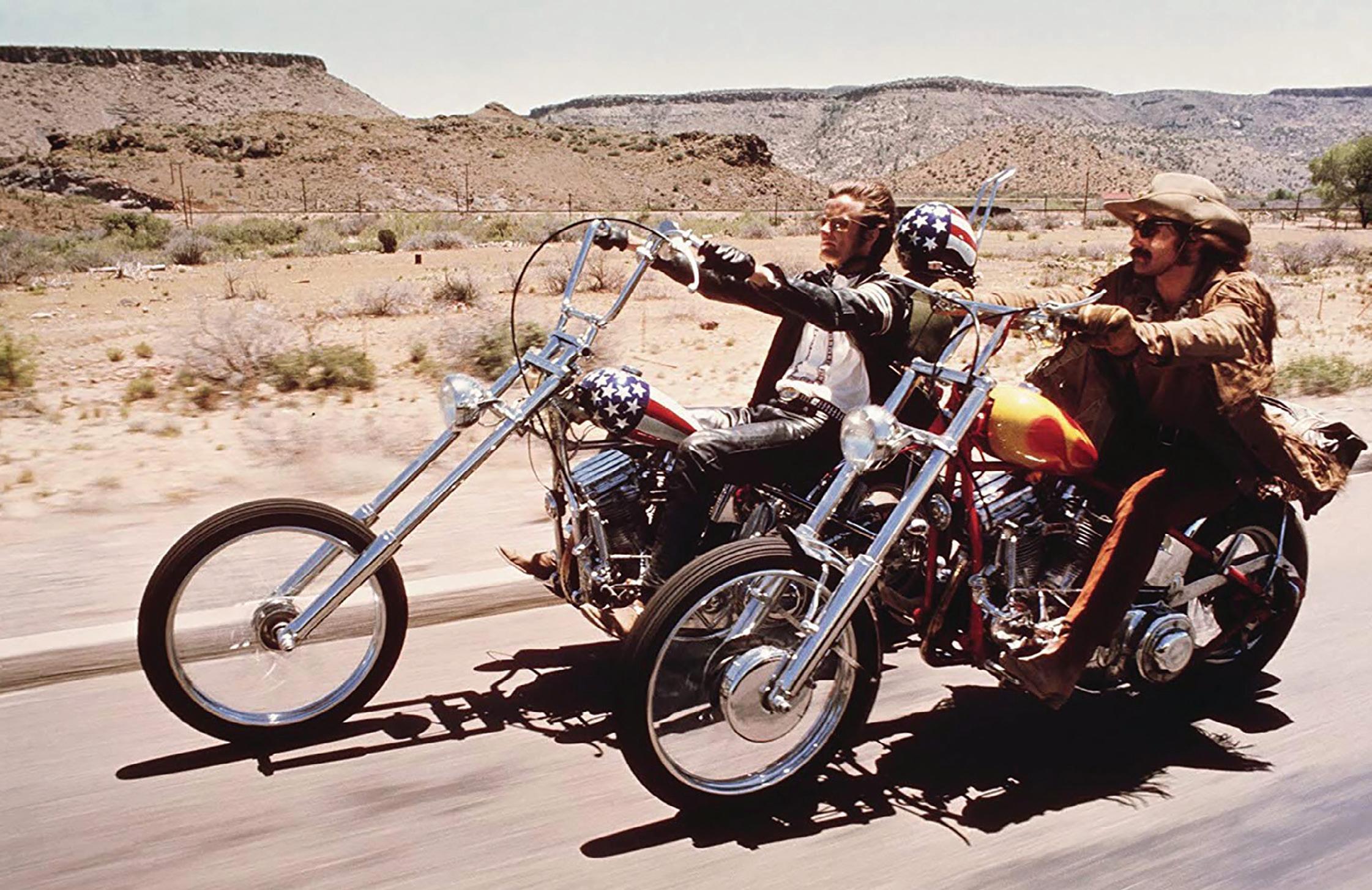
At the dawn of the 1970s Easy Rider helped an entire generation of young filmmakers show Hollywood that the kids were all right, and a decade of killer sharks, taxi drivers, Skywalkers, Italian Stallions, Corleones, deer hunters, raging bulls and dog-day afternoons followed. Easy Rider is a grail myth dressed-up as a motorcycle Western. By the end of the film Wyatt and Billy realize they’ll always be searching for the American Dream. So will we.
Easy Rider kicks off the Belcourt Theatre’s Spirit of ‘69 series with screenings June 7-9. Go to www.belcourt.org for times and tickets.
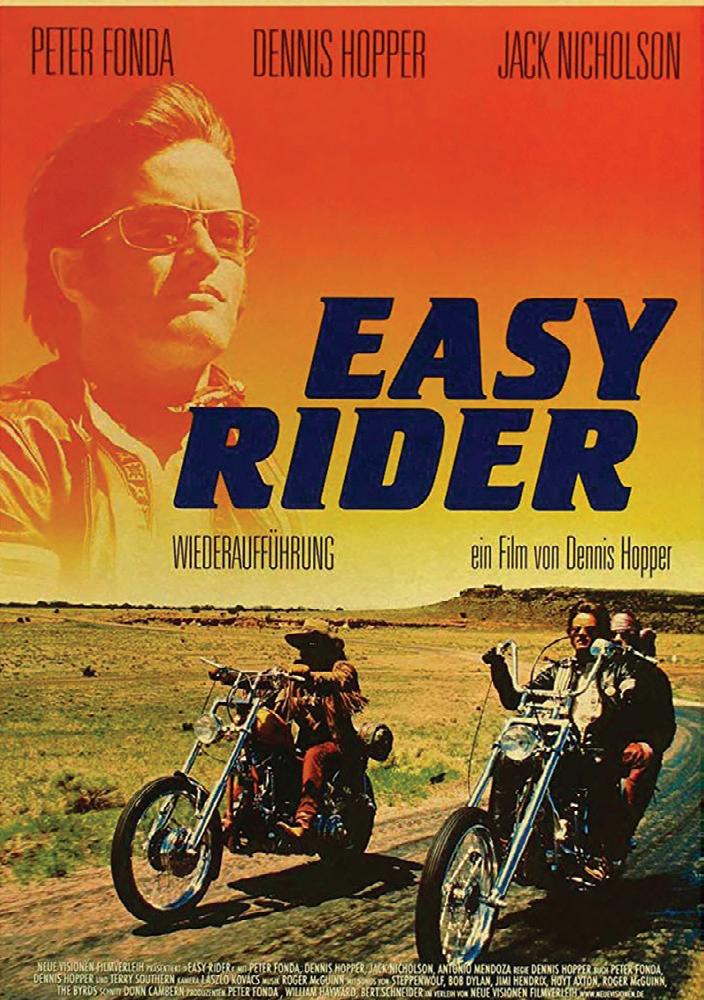
Joe Nolan is a critic, columnist and performing singer/ songwriter based in East Nashville. Find out more about his projects at www.joenolan.com.
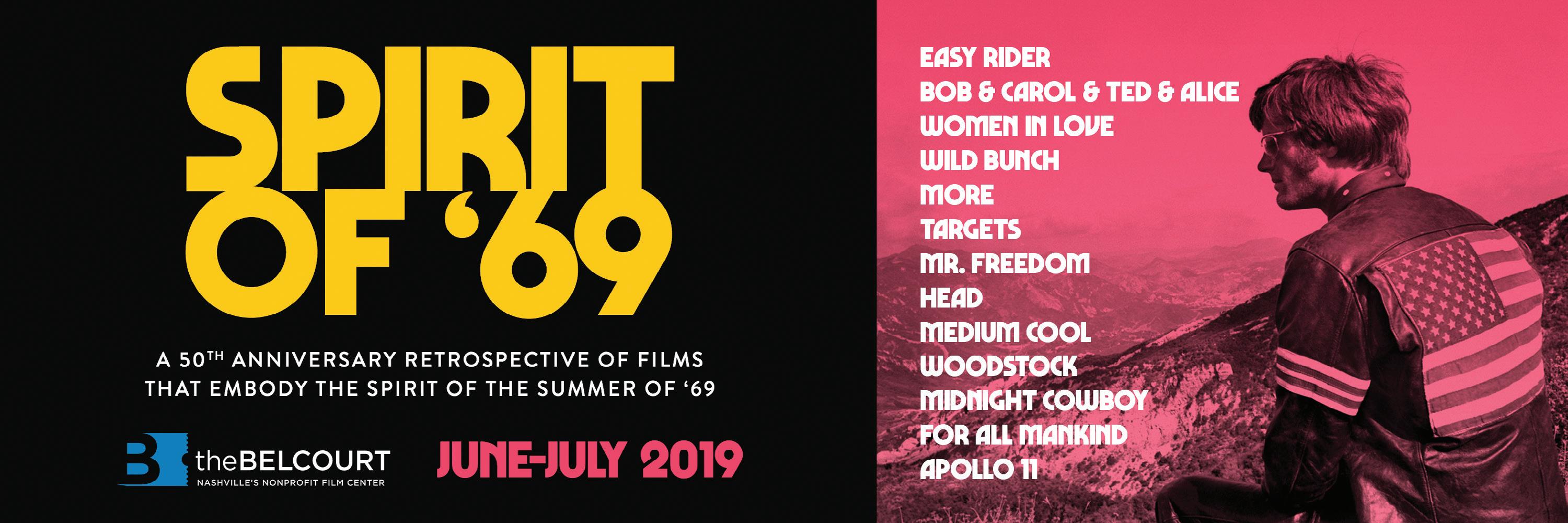
What difference does a day make? There are so many days that seem to make no difference at all. Then there are the significant days. The days a child enters elementary school. Then the day they graduate. College. Marriage. Children. Retirement. There are so many days that matter greatly. What is in a day? Quality of life.
There is the day before you are unemployed. The day before you find out you have cancer and have to move to the city for treatment, even though you don’t have housing. The day your rent increases so you have to move. The day your significant other leaves without a word. What is in a day? Quality of life.
One day you are dreaming. One day there is a new reality. This is a truth for all of us. Most of us have family, friends and community to help offset the bad days and walk with us to those better days. Some of us do not.
Then there is the first day without shelter. The first day in a shelter. The fear of being alone while being in the midst of so many like you. Yet, the you you see, doesn’t seem to reflect the you you have known.
What is in a day? That day you ask, “What do I do with today? What can I do for tomorrow? How did today come to be?” It is our story. It is “My Story.” Each with us with own to tell. Each of us to our own to write.
Because each day matters so greatly, The Salvation Army counts days. Days where people are displaced outside of the economic, social, and environmental quality of life of the community. Days outside of safety, peace, and happiness, the expressed goal of our Tennessee Constitution. Each of these days matters.

The more days someone lives outside of housing the more likely they are to die without housing. What’s in a day? Quality of Life.
The Salvation Army joins the community in calling forth the #QualityofLife #90DayChallenge. A simple challenge that focuses on each day. A focus on each life with such passion that compassion can restore. Restoring people from fear and separation to inclusion and belonging. For when there is no

clear path out of despair, there is no freedom.
What’s in a day? One day someone is housed. The next day they are homeless.
Let us focus on that one day when people who were without housing are home.
The idea is simple. The path is known. All over the country, it is recognized as a matter of public will. Today, will you invest in prayer, invest in compassion, invest your resources, or volunteer to help a neighbor have a new day? John 5:6
Let us commit to the first day of days restored to the center of the quality of life of our Tennessee home. Reflecting the quality of community in the lives of others increases the quality of life of all.

Major Ethan Frizzell serves as the Area Commander of The Salvation Army. The Salvation Army has been serving in Middle TN since 1899. A graduate of Harvard Kennedy School, his focus is the syzygy of the community culture, the systems of service, and the lived experience of our neighbors. He uses creative abrasion to rub people just the wrong way so that an offense may cause interaction and then together we can create behaviorally designed solutions to nudge progress. Simply, negotiating the future for progress that he defines as Quality of Life in Jesus!


How did I end up in Nashville, for that I don't know. Started out for Hollywood, with its lights all aglow. Standing at the bus stop with no money to show, if I hadn't hit Broadway would have money to blow.
Stuck in Nashville, where the corn never grows. Hold on to my skis in a town with no snow. What about Branson, it's there I may go, no use for my dimes since they closed the peep shows!
for


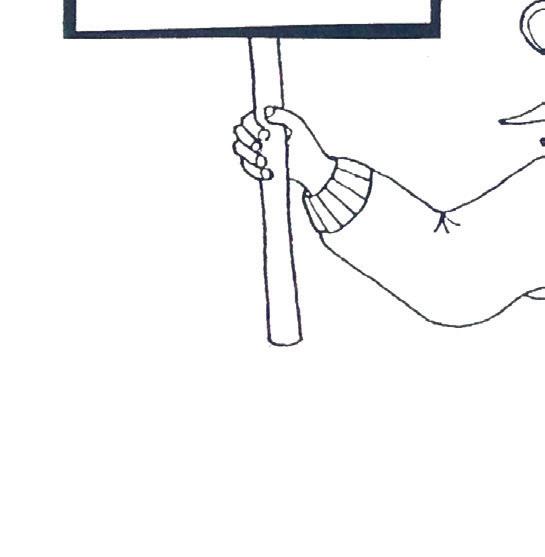

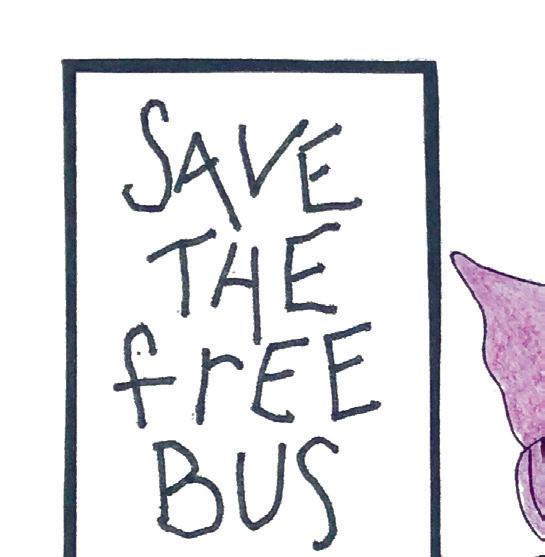










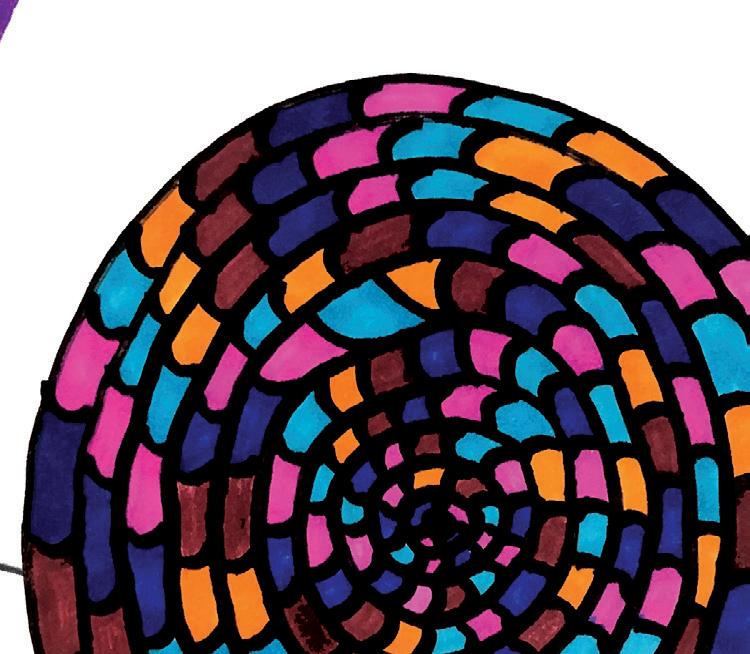






God, give me the strength to hang on 'cause not a day goes by and nothing goes wrong Where there's a will, there's a way Got plenty expereince, that's why I pray.
"The Little Guitar Gone Crazy" BY DAVID "CLINECASSO" C ,FORMERLY HOMELESS VENDOR "Rag Rug" BY DAVID "CLINECASSO" C , FORMERLY HOMELESS VENDOR

Two of Nashville’s transportation options have been in the news recently — banning scooters and cutting bus routes.
Our very own Mayor David Briley sent a letter to scooter companies at the end of May letting them know he plans to ban scooters in Nashville unless the companies address safety concerns. Recently, a 26-year-old man named Brady Gaulke died after being hit by a car while riding a scooter on Demonbreun & 4th Ave S. Banning scooters is a very wise move.
Scooters encourage users to drive recklessly because they’re advertised as a way to get around Nashville traffic. Most people using scooters are not wearing helmets, but are riding in the streets with other traffic. Often tourists who ride scooters have been drinking and don’t pay attention to the traffic laws. They also litter the sidewalks with discarded scooters making
it impossible for anyone using a walker or a powered wheelchair to get by. The companies might think that by addressing these concerns they’d lose money. Wah Wah! Hiring people to ensure public safety is a win and gives the company some good PR. Having booths located at popular spots where humans could monitor drop offs and pick ups is a simple fix. I do not have a college degree — only a high school diploma — and I can see the issues. Should scooters be banned at night? YES. With the amount of drivers I see still texting and driving it’s pretty plain to see that drivers are distracted. What will banning scooters at night really do? It’ll leave one less person to die because of distracted driving. Let’s face it, it’s hard enough to get people to pay attention to other cars, much less a small scooter zipping through intersections without knowing the proper traffic
laws. At least in the day you can see or know to expect scooters. At night, it’s much harder to see and much more dangerous.
MTA, Metro Transit Authority, is once again proposing changes to their service and a price hike. They are planning on eliminating routes 60, 61 (the downtown free bus), 27, 20, 2 and 1 because of the low amount of riders. Take route 27 for example. It runs four times a day — two times in the morning and again two times at rush hour. This gives me the impression that this is a bus set up to get people who work a 9-5 job. For the community of Old Hickory a regular bus route could save people some serious money and possibly make it easier to get around, but because MTA didn’t set up the route to aid in transportation for the entire town
but just along the main drag, what else were you expecting but low ridership?
MTA also wants to increase rates from $1.70 for a 1-ride bus pass, to $1.85. That’s a 15 cent increase. I’ll agree to that when you allow homeless people to ride for free. The poorest population of Nashville are the ones who use the transit service the most and MTA wants to raise the fares? How about focusing on your bus drivers, with their Mario Andretti mentality passing people waiting at bus stops because the driver wanted to pass someone on the left and couldn’t make it back to the right in time to make the stop? How about hiring drivers that don’t wave past the pay box because they’re in a hurry? Although this practice did save me some money I can see now that it was actually theft of services by your own driver. Make some improvements and then I’ll get behind the rate increases.
I’ve asked myself this question many times: Why can’t we just love one an-
 BY JOHN H., HOMELESS VENDOR
BY JOHN H., HOMELESS VENDOR
other? I figure if anyone wants the truth about it all, they’ll have to reach very far
back through the ages to get it. I think it’s just sin though. Love is one way and on the other hand there will always be the opposite: hate. When Jesus was teaching the disciples, one of his most important lessons was “love one another.”
Today I look at the body of Christ, and I see so many who supposedly belong to that body but love whenever they want, regardless of what God commands. Many times we do things that aren’t intentionally hate but aren’t love either. God’s word say what isn’t love is hate. There are no in betweens. Ya see, we Americans want to think a variety of ways, wanna
be open-minded. With God’s word we can be open minded only to a certain extent, but there’s a limit. If we get too open-minded we could easily get out of content to what God’s word is saying. We must keep God’s word God’s way.
Back in the biblical days many didn’t love one another then either. Basically today is a repeat of yesterday. Everyone didn’t love one another then just like everyone don’t love one another now. First two commandments, which the most most important commands us, “Why can’t we just love one another?” Give it some thought!
Many of the homeless people on the street prefer holding cardboard signs for many reasons. Many of them need to get cash directly from people to flow into their pockets. Because of this, they do not like spending money on newspapers, hence, they think cash in by cardboard
sign is much more than cash in by newspapers. Sometimes, I used to do the same thing, however, I realized that it doesn’t work because the same people would see me at the same spot. They became tired of my “help me” sign and as a result, my income decreased by
50 percent. So I quit the business of cardboard signs and turned into a Contributor newspaper vendor and I was glad. Business runs smoothly and I’m happy because my customers see me not as a beggar on the street, but as a newspaper seller. They use a
big term referred to as “entrepreneurship.” Although I advise those with a cardboard sign to try selling Contributor newspapers, most of them say they don’t want to be under somebody, but that freedom is their desire. As a result, they keep using the signs.

Hold it right there, Gemini! Put your machete back in the garage. That snake in your garden isn’t gonna get you. It’s just a big ol’ rat snake. The only damage he’s gonna do is to those pests that have been eating your arugula. Just because something makes you uncomfortable doesn’t mean it isn’t beneficial. In fact, you and your arugula would probably benefit by tolerating a little more discomfort.
There is a saying attributed to the Ojibwe people of North America, it goes something like, “Sometimes I go about in pity for myself, and all the while, a great wind carries me across the sky.” I think that’s a good one for you this week, Cancer. Your tendency may be to feel sorry for yourself, but try to notice how far you’ve come and how little you know about the future.
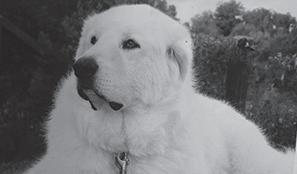
I liked the old graffiti better. Maybe it wasn’t as pretty. But it least it had a real sense of danger. This new stuff, the corporate-sponsored community-sanctioned public art, it’s all fine and good, but it’s missing something. There’s no fear in it. Sometimes doing good work requires a little bit of risk. Work a little closer to the edge this week, Leo. And keep your spray-paint cans out of sight.

You’ve been putting this off long enough. Seriously, Virgo. We’re all ready for you to move on to your next big thing and if you’re ever going to do that, you’ve got to get this current little thing squared away. So make a move Go ahead and return that phone call, reply to that email, clean out the hall closet. Whatever’s been in your way, get it done this afternoon.



Did you try restarting it, Libra? That’s always the fi rst thing I do, just try restarting it. Sometimes that clears things up straightaway. See, the temptation is to delve deeper into the problem. To start clicking buttons and changing everything around. But often the simplest solution is the best. Before you follow that trail one more step, go back and try step one. It might not work, but at least you can check it off the list.
Maybe I’ve been putting off going to the dentist. In fact, maybe I’ve been putting off going to the dentist for six years. And every year that goes by, it seems like a bigger hassle to get back to it. But I’ll tell you something, Scorpio, whatever you’re putting off, there is no better time to do it. I fi nally made my appointment. When are you going to make yours?
In business, they say you have to pick two: price, quality, and speed. You can’t do all three and do them all well. If you focus on just one, your competitors will outdo you on the other two. So you have to leave one behind. That’s the kind of choice you’ll be making this week, Sagittarius, so I think you should remember, you can’t pick them all.
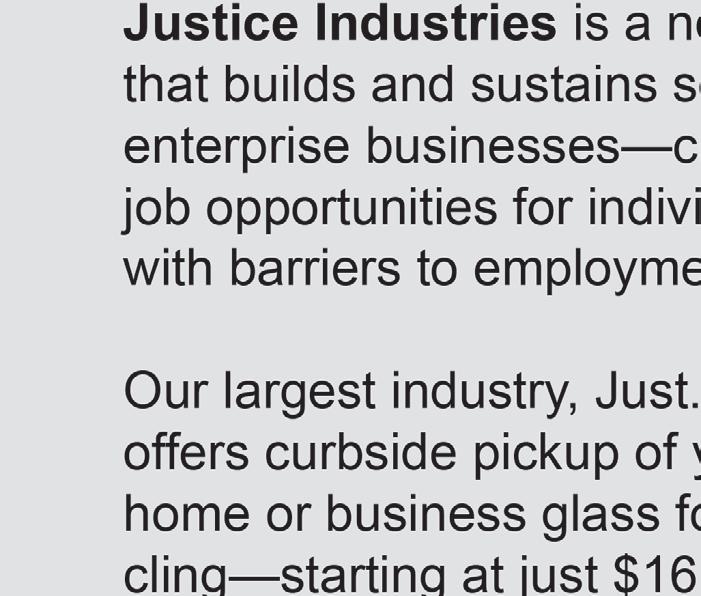
Whenever people say “life is just a bowl of cherries!” they’re usually being sarcastic. It’s one of those phrases that basically means it’s opposite. I think it’s time for that to stop, Capricorn. I think life actually can be a bowl of cherries. I think it’s pretty simple. All you need is a bowl and some cherries. Now, put the cherries in the bowl. Then maybe, I don’t know, eat them. If you get to the bottom of the bowl and life still seems rotten, refill and try again.
Say, Aquarius, why’d you quit practicing your guitar? And how come you never learned Spanish? Was there a reason you never learned to change the oil in your car? Now I’m not trying to make you feel guilty about any of this stuff. You made choices and your interests changed. But I would like to remind you that the things you used to be interested in are still out there. That’s the great thing about learning: You can start again today.

You were 10 minutes late to work again, Pisces. And it looks like you forgot to file your last report on Friday and you’re already behind on your checklist for the week. So you apologize and promise to do better. But I don’t think that’s going to fix it. I think you’re bored, Pisces. I think it’s time to find something here that excites you or find someplace else that does.
I’ve often wondered if love might just be a kind of understanding. If you really understand someone, you can’t help but love them. Which would be great news, except that there are so many complicated people and so little time to understand them all. That’s where forgiveness comes into play. If you simply can’t understand, you have to forgive. I think that’s what it will have to be this week, Aries. If you can’t understand, just skip to the forgiveness.
Once again, Taurus, I have to apologize. It seems last week’s hoboscope was based on an astral report that used falsified data from an accidentally unverified source. The Stars promise to do a better job following up on their sources in the future. This week, just take it as a lesson that we all make mistakes.
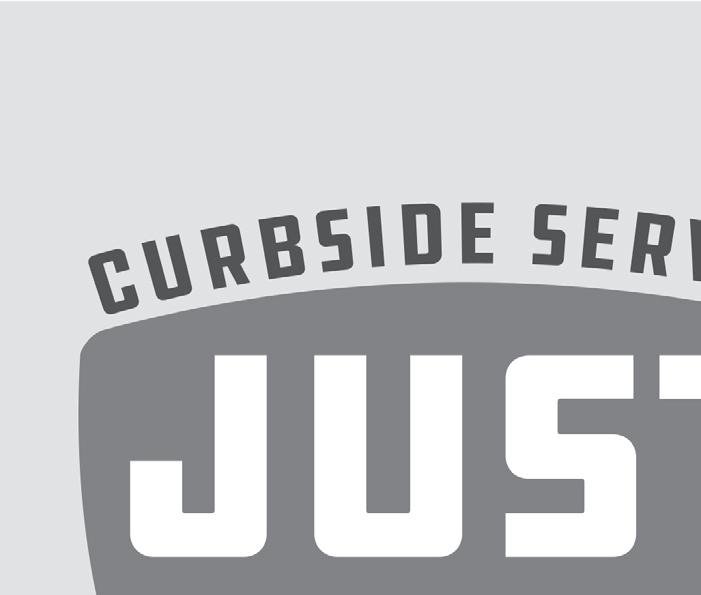




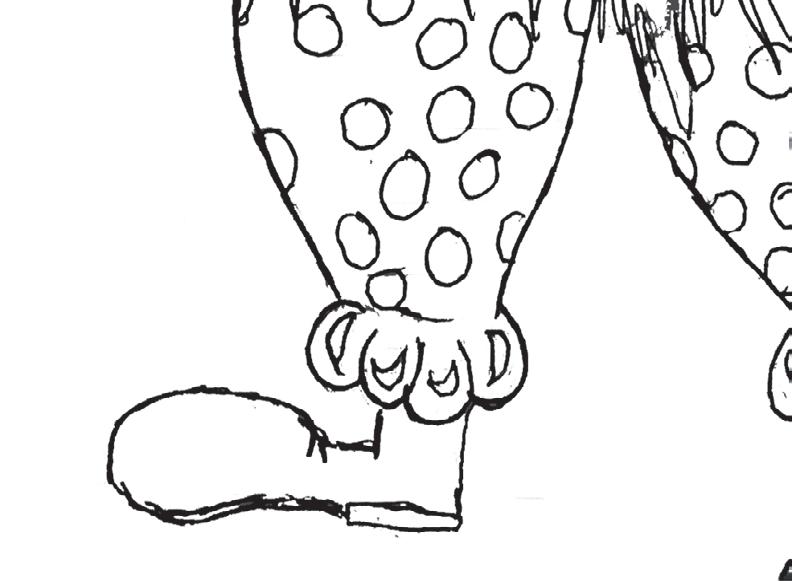





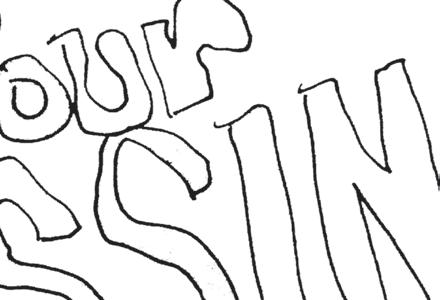
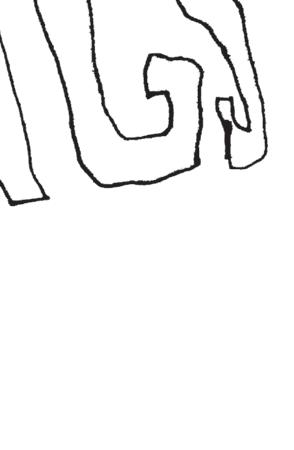
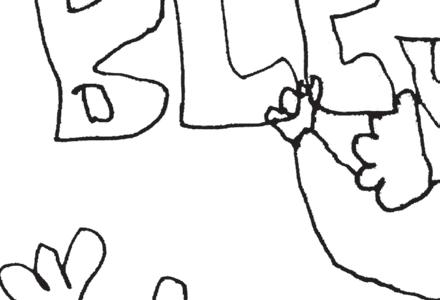
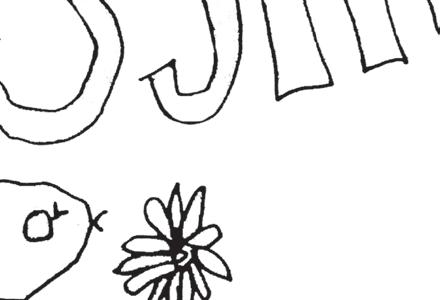
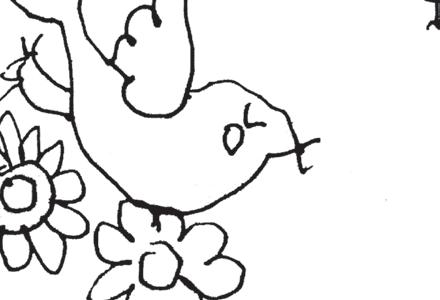
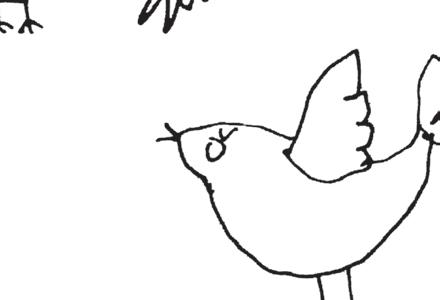








When I was 14, I started working for this guy Steve, who owned a body shop down the road from where I grew up. We had this one truck in the shop that we were getting ready to paint. One of the tires had a slow leak, so I had to pump it up everyday before I moved it. One day the bead was broke, which means you have to pull the tire up against the rim to seal it before it will hold air. Steve looked at it and said let me show you a trick that will seal the bead.
He had two cans of starting fluid (it’s highly flammable) and sprayed some between the rim and the tire then lit it. Pop. Didn’t work. The trick is to blow the tire against the rim. So, Steve poured about a cup
of paint thinner into the tire (spilling most of it). Then we emptied both cans of starting fluid in there, then he lights a match. It was a sunny day, but I could still see the flash behind me. When I turned around Steve was up against a table where we stored a five-gallon can of thinner. Flames were coming from under the wheel-well of the truck.
I grabbed a rag and Steve grabbed another and we started to beat out the flames. I had undercoated it the day before and it was cooking. I looked down to see that my rag was on fire and so was Steve’s. I threw mine and it went right in the truck window! Steve threw his and it landed on top of the can of thinner. We looked at each other like “uh
oh!” After we beat the fires out, Steve says, “Hey, why don’t you take the tire off and fix it right.” Gee, why didn’t I think of that?
Then there was Ernie. Ernie was one of my directors when I did theater. One day Ernie called and said one of his actors dropped out of a play that opened the next night. He said since I didn’t have time to get off-book (know my lines) I could do it as readers-theater (that’s script in hand).
The next night I walked into the theater and Ernie’s wife handed me a cut script with all my lines highlighted. I underline my scripts, but that works. I looked it over back stage and it looked OK. Minutes later I went on stage and looked
at my script. It looked blacked-out, like some kind of CIA memo. For 50 minutes I had to improvise my lines. After the show I come off stage and looked at Ernie and he says, “What? I thought that went very well.” He wasn’t the one out there!
I still read the newspaper from back home everyday. About a month ago, I saw Steve’s obituary. About a week later I saw Ernie’s. I will never forget those guys.
I worked for Steve about eight years. Steve showed me not only about bodywork but also how to run a business. And Ernie taught me how to play another person on stage and be real in life.
I will never forget them.

You know it pisses me off that agencies think just because you’re homeless or get thrown out of your home or apartment that you’re crazy and need to see someone. Well, we are human beings and we do have feelings and they do get hurt. Maybe the agencies need to stop treating us like trash or dirt or even like we’re crazy. Maybe the only ones that are crazy are the agencies that are making us look bad. Maybe that is why people say bad things about homeless people because we are all made out to be crazy and not stable. This is why we get a bad name. This is why people don’t want to help us. Just because agencies label us all as crazy when we are not. We are human like everyone else here. We need help. It feels like the only way to find a place to live, is by being branded mentally ill. I don’t think that is right to do to anyone especially homeless people because we need the help most. This is why there are so many homeless people. No one wants to help people like us because it is not politically correct.
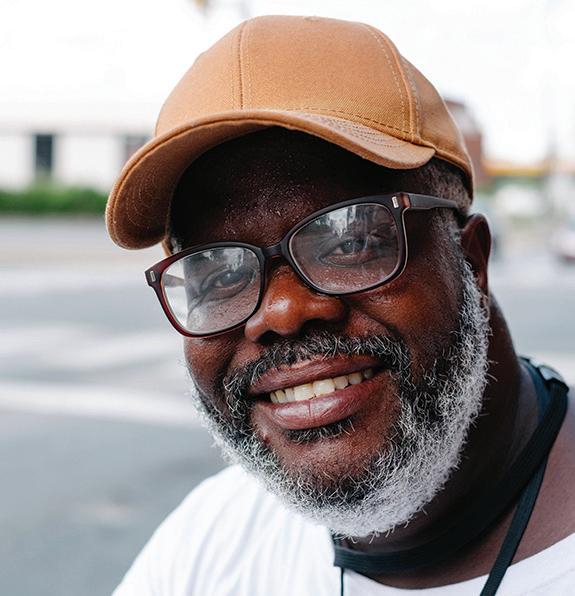
Being consistent is a wonderful path to take in life, but sometimes in our patterns of consistency, we overlook the deep needs of other valuable necessities. As we strive to accomplish our major goals of the next stage in our lives, the small things are either ate up, pushed aside or just merely forgotten about.
Do you ever remember doing something that seemed of no major value to you and thinking that it also really didn't mean anything to someone else either? It was something that you felt good about at that time, but that someone else accepted it as more than something small.
What about when dads and moms take their little ones out to ride their bikes with training wheels showing them the importance of how to be careful riders? Or the times they take them to the park to enjoy themselves and become friends with others? It could be a small thing to you, but a big thing to your child.
Let's look at work and showing up 10 - 15 minutes
early doing over what is called for and even staying overtime. Yes, these are all options and some we choose to be consistent in and then time carries on and some develop and we can no longer do them any longer.
Do we judge the options of others who are unable to take time out to take their child out for a bike ride and to play with others in the park?
Do we consider that things might be so rough at home someone might not be able to make it to work (for the ones that have a constant job) or to show up early and leave late? What about those that are trying the best way they can to get off the streets? Some choose to sit up high and look low and come out to party and play at their leisure.
See we all have options that may be good or bad. Within the choices we make there are also options in every choice. It all boils down to the hand that one has been dealt, and what game you choose to play. One must know that at times "life" is a dirty game.



